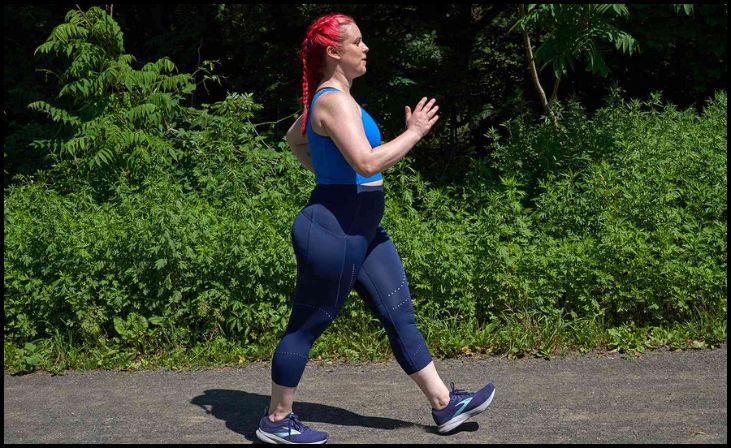Walking is one of the most accessible and effective forms of exercise for weight loss. It requires no special equipment, can be done almost anywhere, and offers numerous health benefits beyond shedding pounds. Whether you’re a beginner looking to kickstart your fitness journey or an experienced exerciser aiming to maintain your weight, walking can be a powerful tool. However, to maximize the weight loss potential of your walking routine, it’s important to incorporate specific strategies. From adjusting your pace and incorporating intervals to maintaining proper form and consistency, these pro tips can help you get the most out of your walking workouts. In this blog post, we’ll explore eight pro tips to help you lose weight through walking effectively and sustainably.
1. Walk at a Brisk Pace

To effectively lose weight through walking, it’s important to maintain a brisk pace. Aim for a speed where you can still hold a conversation but are slightly out of breath. This typically means walking at a pace of about 3 to 4 miles per hour. Walking briskly increases your heart rate, helping to burn more calories and improve cardiovascular health. Using a fitness tracker or app to monitor your pace and heart rate can be helpful in ensuring you are walking fast enough to achieve your weight loss goals.
2. Incorporate Interval Training
Adding intervals to your walking routine can significantly boost your calorie burn. Interval training involves alternating between periods of high-intensity walking and slower, recovery periods. For example, you could walk briskly for two minutes, then slow down to a moderate pace for one minute, and repeat this pattern. This type of workout not only burns more calories but also improves your endurance and metabolism. Over time, as your fitness level increases, you can adjust the intensity and duration of your intervals for continued progress.
3. Use Proper Form
Walking with proper form not only helps prevent injuries but also ensures you are getting the most out of your workout. Stand up straight with your shoulders back and relaxed. Engage your core muscles and keep your head up, looking ahead rather than down at the ground. Your arms should swing naturally at your sides, and your steps should be smooth and even. Focusing on good posture and a strong, steady stride can help you walk faster and more efficiently, leading to greater calorie burn and weight loss.
4. Walk Regularly
Consistency is key when it comes to losing weight through walking. Aim to walk at least five days a week for 30 to 60 minutes per session. Establishing a regular walking routine helps you build endurance and burn calories consistently. If finding time is a challenge, try breaking your walks into shorter sessions throughout the day. Even a 10-minute walk after each meal can add up and make a significant difference in your overall activity level and weight loss efforts.
5. Track Your Progress

Keeping track of your walking routine can be highly motivating and help you stay on track with your weight loss goals. Use a pedometer, fitness tracker, or smartphone app to monitor your steps, distance, and calories burned. Set achievable goals and gradually increase your daily step count. Reviewing your progress regularly can provide a sense of accomplishment and encourage you to keep going. Additionally, tracking your walks allows you to identify patterns and make adjustments to your routine as needed to continue seeing results.
6. Mix Up Your Routes
Walking the same route every day can become monotonous and may decrease your motivation over time. To keep things interesting and challenge your body, vary your walking routes. Explore different neighborhoods, parks, or trails. Incorporating varied terrain, such as hills or uneven paths, can increase the intensity of your walks and help you burn more calories. Changing your scenery not only keeps your walks enjoyable but also engages different muscle groups, contributing to more effective weight loss.
7. Stay Hydrated
Staying hydrated is crucial for any exercise routine, including walking. Proper hydration helps maintain your energy levels, improves performance, and supports overall health. Carry a water bottle with you and take sips throughout your walk, especially in hot weather or during longer sessions. Drinking water before and after your walk is also important to replenish fluids lost through sweat. Staying well-hydrated can help you feel more energized and capable of maintaining a brisk pace, which is essential for maximizing calorie burn and weight loss.
8. Incorporate Strength Training

Adding strength training exercises to your walking routine can further enhance your weight loss efforts. Building muscle helps increase your resting metabolic rate, meaning you’ll burn more calories even when not exercising. Simple bodyweight exercises, such as squats, lunges, or push-ups, can be incorporated before or after your walk. Alternatively, you can use resistance bands or light weights for added challenge. Strength training not only aids in weight loss but also improves overall muscle tone and helps prevent injuries, making your walking routine more effective and sustainable in the long run.
Conclusion
Walking is a highly effective and accessible form of exercise for weight loss. By incorporating these pro tips into your routine, you can maximize the benefits of walking and achieve your weight loss goals more efficiently. Remember to walk at a brisk pace, include interval training, maintain proper form, stay consistent, track your progress, vary your routes, stay hydrated, and incorporate strength training. With these strategies, you’ll be well on your way to a healthier, fitter you.




